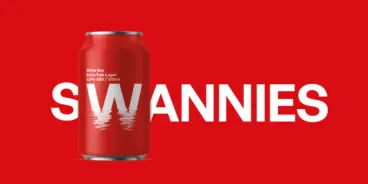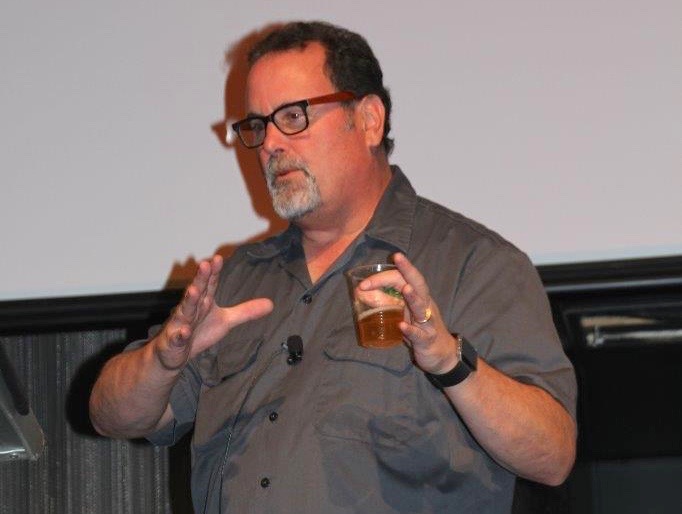
Hop usage peaking: Mitch Steele
Brewers cannot realistically continue to exponentially increase the amount of hops they put in their beers, says India Pale Ale expert Mitch Steele.
Steele, author of IPA: Brewing Techniques, Recipes & the Evolution of India Pale Ale, said a typical IPA in the 1990s or early 2000s (including those from Stone Brewery, where he was brewmaster) had around 3⁄4 pound of hops (340g) per barrel.
Twenty years later, he said double that amount – 1.5 pounds (680g) – is now the norm.
“There are some brewers who won’t use less than two pounds of hops per barrel in an IPA,” he said.
Steele suggested the hop quantity in an IPA may have just about peaked, because high hop usage causes lots of beer loss, and the hops themselves are very expensive.
“You definitely get to a point of diminishing returns,” he said.
“If we are talking about bitterness, there is a ceiling. The solubility of iso-alpha acids is dependent on Gravity and pH, and the upper limit for bitterness in wort is about 130-150 IBU, and in beer is 100-110 IBU in a high gravity beer.
“Human beings can’t perceive changes in bitterness when IBUs are higher than 80, so it’s kind of silly to reach for IBUs above 100, though it’s a cool marketing tool.”
Early IPAs
Steele was speaking to Australian Brews News following his recent visit to Adelaide for the Australian National Homebrewing Conference (ANHC5).
His presentation touched on some of the processes that were used for the IPA (India Pale Ale) style in its early days.
In the modern craft beer scene, an IPA’s freshness is considered important as that is when it will taste its best, and as the brewer intended. It therefore came as an interesting twist to learn that historically, IPAs were known to be secondary fermented in the barrel for one year before consumption.
Also, with many home brewers today placing an emphasis on having a strong rolling boil during their brew day, it was fascinating to learn that in the early days of IPA brewing, a low simmering boil was instead common.
It was interestingly noted by Steele, that the IPA brewing regions of the 1800s were Scotland, USA/Canada and Australia. Each of these regions contributed to the IPA story with some interesting historical facts. It is likely that Scotland produced a darker coloured IPA as they used a shorter and more intense boil, while in the USA and Canada, IPAs were aged in hogsheads (large casks) and vats.
Perhaps one of the most significant pieces of trivia with relation to the IPA style of beer belongs to Australia (no national bias intended!), with the first mention of the term India Pale Ale currently being credited to the Sydney Gazette on the 29th August 1829.
In modern brewing, it is known that the mineral profile of water used in the brewing process can have an effect on the quality of the beer style being produced. From records as early as the 1800s, it can be seen that water treatment had already begun, with the properties of water being altered to match the classic style of Burton-On-Trent, a city in England with naturally occurring water with a suitability to brewing, a process still occurring in modern breweries.
IPA sub-genres
Steeleoutlined the different styles or variations of IPA currently in production, providing comments on each:
- Session IPA is predominantly dry hopped using Mosaic and Citra hops and designed for easy drinking. It is one of the more recent trends in US brewing with an ABV of less than five per cent while still being hopped as a typical American IPA. For lovers of hops, this style is an exciting new trend having amazing hop character while remaining sessionable. A commercial example is Ballast Point’s Even Keel.
- Double/Imperial IPA (DIPA) came about in the early 2000s with production of the first being credited to Vinnie Cilurzo of Russian River Brewery (US), the beer named Blind Pig. Characteristics of this style include higher alcohol while being intensely hopped. Commercial examples include Pliny The Elder, again by Russian River, and Dogfish Head’s 90 Minute IPA.
- Belgian IPA seems to have lost popularity. It is made by first creating a Belgian Golden Ale, then heavily dry hopping it with US hops. It is thought this came about around 2005 when Belgian brewer Hildegarde van Ostaden returned from a visit in the US, being inspired by the American IPA. US examples include Flying Dog’s Raging Bitch, and Green Flash’s Le Freak.
- Triple IPA is not an official style, but its latest characteristics include an ABV greater than ten per cent with 100+ IBUs, examples being given as Stone Brewery’s Ruination and Russian River’s Pliney The Younger. A Quadruple IPA has even less definition, and has been referred to as a Hop Wine.
- Wit IPA/White IPA is effectively the blend of the Belgian Wit style combined with an American IPA. The first came about in 2011 being a collaborative effort of the Deschutes Brewery and Boulevard Brewing Company in the US. These had the higher alcohol content of 7.4 per cent while including flavour from orange peel and coriander, and being spiced with sage and lemongrass.
- Black IPA had its origins in the 1990s and was brewed similar to an IPA or DIPA while avoiding dark malts so as not to create a hoppy porter. The style is credited to Greg Noonan of the Vermont Pub and Brewery in Burlington, the first batch being named Tartan IPA. It was referred to as a strong roasty Winter IPA. A commercial example of the style is Stone Brewery’s Sublimely Self-Righteous Ale.
- East Coast IPA (aka New England IPA), which is one of the newest trends. It is very hazy and unfiltered, and juicy (as in orange juice), with citrusy and stone fruit hops. Wheat flour is added in the mash, and dry hopped during fermentation.
“This is a really exciting time for IPAs,” commented Steele, who said ingredients such as fruits, peppers, cocoa, coffee, and even cannabis had made their way into recipes that as yet are not defined by a specific IPA style.
“I still love IPAs, but hope the drive behind IPAs does not lead to other good styles dying out,” he said.
Read more:
IPA has gone too far: Mitch Steele
IPA deluge hits the market
Hops truly are moreish: Charlie Bamforth




